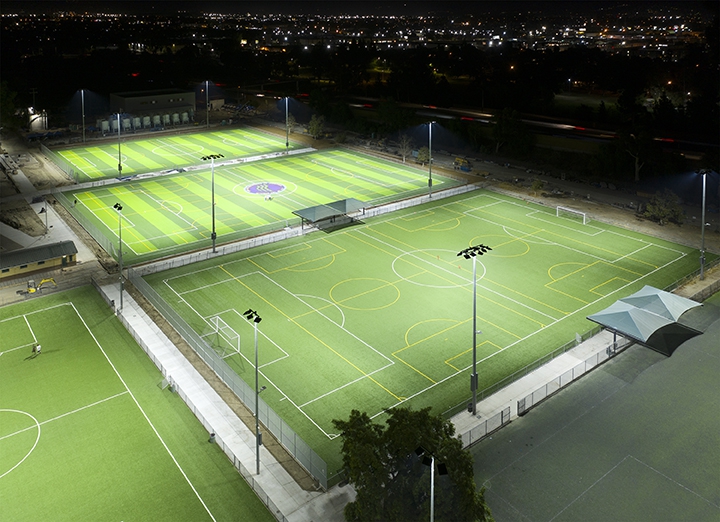In the past decade, the sports lighting world was revolutionized when LED lighting emerged as a cost-effective solution at facilities ranging from professional stadiums to neighborhood parks.
What facility owners have learned since then is that while LED offers many important benefits, poorly designed LED lighting from inexperienced manufacturers can cause serious problems with inadequate light levels, excessive spill and glare, and overall reliability.
These concerns have forced some facilities to remove and replace their LED lights just a few years after installing them. Here are some considerations to avoid these costly mistakes at your facility.
Q: Does all LED sports lighting perform the same?
A: No. This is probably the biggest misperception in sports lighting. Different manufacturers' LED lighting equipment delivers vastly different results. Poorly designed LED fixtures don't guarantee the necessary light levels and have been the source of problems with glare and spill light. Making the most of LED technology takes decades of research and experience applying light in sports settings, as well as a proven system for effectively controlling light and minimizing glare and spill.
Q: Why should I be concerned with glare and spill light?
A: Glare and spill light can negatively affect visibility for players and fans, while also impacting neighbors, which can lead to facilities being forced to leave their lights off until these issues are resolved. However, optics and visoring can be designed to redirect light that would have otherwise been wasted back onto the field, reducing energy consumption and improving efficiency.
Q: What should I look for in a quality LED system?
A: A complete system approach with lighting, structural, electrical components and integrated surge protection built to work together will ensure the best and longest-lasting performance. Many sports lighting manufacturers just sell LED fixtures, which must then work with parts and pieces from different suppliers. This makes it difficult to guarantee the performance of the lighting as well as the availability of replacement parts.
Q: Can I just retrofit my lighting on a fixture-for-fixture basis?
A: While it sounds like the simplest route, swapping LED fixtures in place of your old ones typically won't deliver the best results. Just because a certain LED fixture is marketed as a fixture-for-fixture equivalent to 1,500-watt metal halide lighting doesn't mean it will achieve the same light levels. The best way to ensure your LED retrofit delivers the light levels you need is with photometric lighting designs in the project's planning phase.
Q: Who is responsible for resolving any issues that arise?
A: No sports lighting is maintenance-free. It is important to be clear on the length and details of your system's warranty so that you know who is responsible for scheduling, executing and paying for any service that is needed. For comprehensive coverage, look for a combination of proactive system monitoring and a parts-and-labor warranty that is backed by a network of regionally based technicians who can provide timely service for your lights.
Click here to learn how you can "light it right" and ensure your facility is always ready for play.



